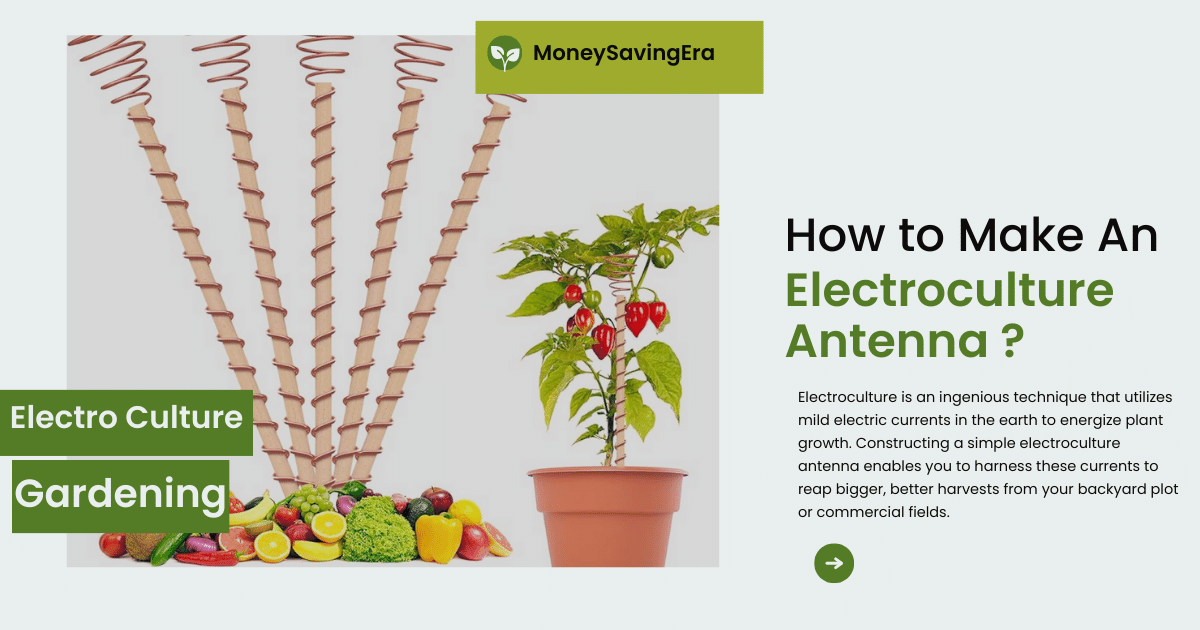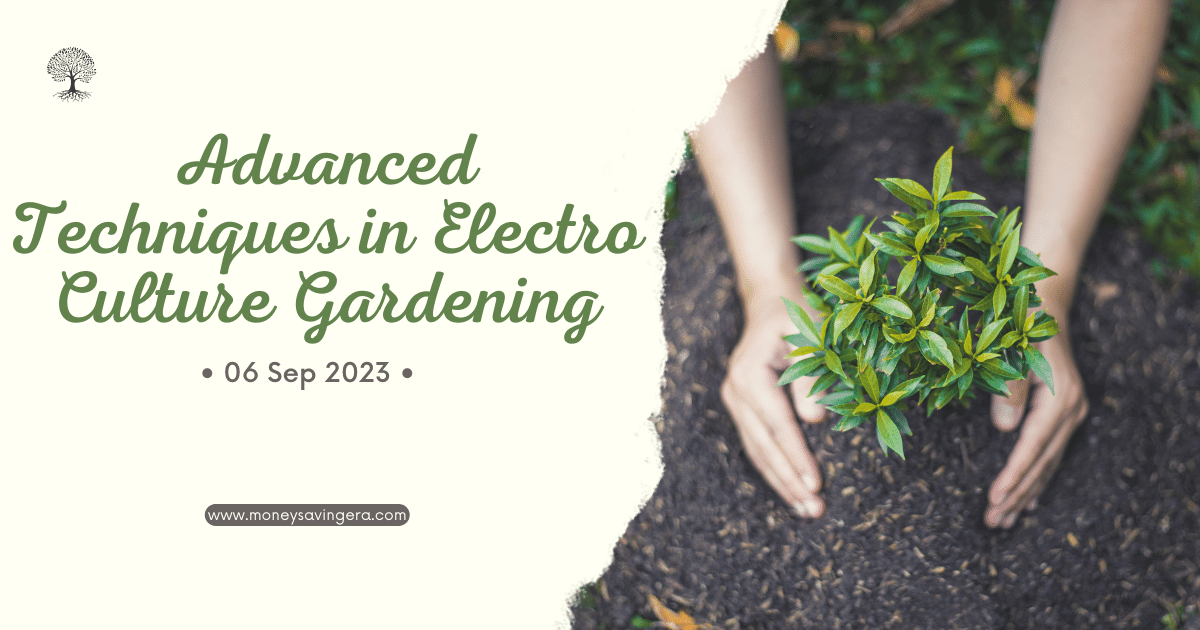Electro Culture Gardening is a cutting-edge technique that has gained popularity among farmers and gardeners for its ability to boost crop yield and enhance plant growth. This practical guide will give you a comprehensive understanding of Electro Culture Gardening and how to implement it to maximize your harvest.
Electro Culture Gardening involves the application of low-level electrical currents to plants, stimulating their growth and improving nutrient absorption. It works by mimicking the natural electrical signals in plants and activating their physiological processes.
The benefits of Electro Culture Gardening are numerous. Not only does it lead to increased crop yield, but it also promotes enhanced plant growth and improved nutrient absorption. By incorporating Electro Culture Gardening techniques into your gardening practices, you can ensure healthier plants and a more abundant harvest.
To start with Electro Culture Gardening, choosing the right plants and creating a suitable garden environment is important. Different plants have varying responses to electrical currents. Hence, selecting the appropriate species is crucial for optimal results. Creating an Electro Culture garden involves setting up the necessary equipment and ensuring proper electrical connections.
Implementing Electro Culture techniques involves applying electric pulses to your plants and using electrolytes to enhance conductivity. Understanding the frequency and timing of these electrical stimuli is essential for achieving the desired outcomes.
While Electro Culture Gardening offers numerous benefits, it is important to avoid common mistakes. Overexposure to electricity, using incorrect voltage levels, and ignoring plant specifics can negatively impact your plants and yield.
To maximize your crop yield with Electro Culture Gardening, follow these tips:
Maintain consistency in applying electrical pulses, monitor plant health regularly, provide adequate nutrition and water, and adjust the frequency and intensity of electrical stimuli based on plant response.
By incorporating the principles and techniques of Electro Culture Gardening into your gardening practices, you can unlock the potential of your plants and achieve a bountiful harvest.
Key takeaway:
- Increased Crop Yield: Electro Culture Gardening can boost crop yield by utilizing electric pulses and electrolytes, improving plant growth and nutrient absorption.
- Enhanced Plant Growth: Electro Culture Gardening stimulates plant growth by providing optimized frequency and timing, resulting in healthier and more productive plants.
- Improved Nutrient Absorption: Through the application of electric pulses and electrolytes, Electro Culture Gardening enhances the plant’s ability to absorb nutrients, leading to improved overall plant health and vitality.
Understanding Electro Culture Gardening
To comprehend electro culture gardening, it is crucial to analyze its principles, benefits, and potential applications.
- Principles: Electro culture gardening utilizes electrical currents to stimulate plant growth and yield. By applying low-voltage currents to plants or their growing medium, electro culture gardening promotes better nutrient uptake, enhances photosynthesis, and improves overall plant health.
- Benefits: Understanding electro culture gardening can help growers harness its numerous benefits. Electro culture stimulates root development, leading to stronger and more resilient plants. It can also increase crop yield and improve the quality of fruits, vegetables, and flowers. Additionally, electro culture gardening can reduce the need for synthetic fertilizers, pesticides, and herbicides, making it an environmentally friendly approach.
- Potential Applications: Electro culture gardening can be applied to various indoor and outdoor crops. It can benefit small-scale and large-scale growers, including home gardeners, commercial farmers, and greenhouse operators. Whether growing herbs, vegetables, ornamental plants, or trees, electro culture gardening can enhance crop productivity and quality.
- Implementation: Implementing electro culture gardening involves several steps. First, it is essential to understand the electrical requirements and safety precautions. Proper equipment, such as low-voltage power supplies and electrodes, should be used. The electrodes can be placed in the soil or water surrounding the plants, ensuring the electrical current reaches the roots. Regular monitoring of the current levels and duration of application is necessary to prevent plant damage.
- Limitations: While electro culture gardening offers promising benefits, it is important to consider its limitations. Plant species may respond differently to electrical currents, so careful experimentation and observation are necessary. Additionally, certain plants or sensitive varieties may be more susceptible to adverse effects from electro culture, so it is crucial to research and consult experts before implementing this technique.
Comprehending electro culture gardening can give growers a unique tool to enhance crop yield and quality. By harnessing electrical currents to stimulate plant growth, this innovative approach offers numerous benefits and potential applications. However, it is important to consider the principles, implementation steps, and limitations when exploring electro culture gardening.
What is Electro Culture Gardening?
Electro-culture gardening, also known as electric gardening or electroculturing, is an innovative agricultural technique that utilizes electricity to enhance plant growth and increase crop yield. This technique has gained popularity among farmers and gardeners due to its numerous benefits and potential for improving productivity.
Electro Culture Gardening stimulates their natural growth processes by applying electrical pulses to the plants and enhances nutrient absorption. This method has been proven effective in various plant species and can be employed in small-scale gardens and large-scale farms.
The main principle behind Electro Culture Gardening is the application of electric pulses to the plants. These pulses stimulate the plant’s cellular activity, promoting root development, increasing chlorophyll production, and improving nutrient uptake. Consequently, plants grow faster, stronger, and healthier.
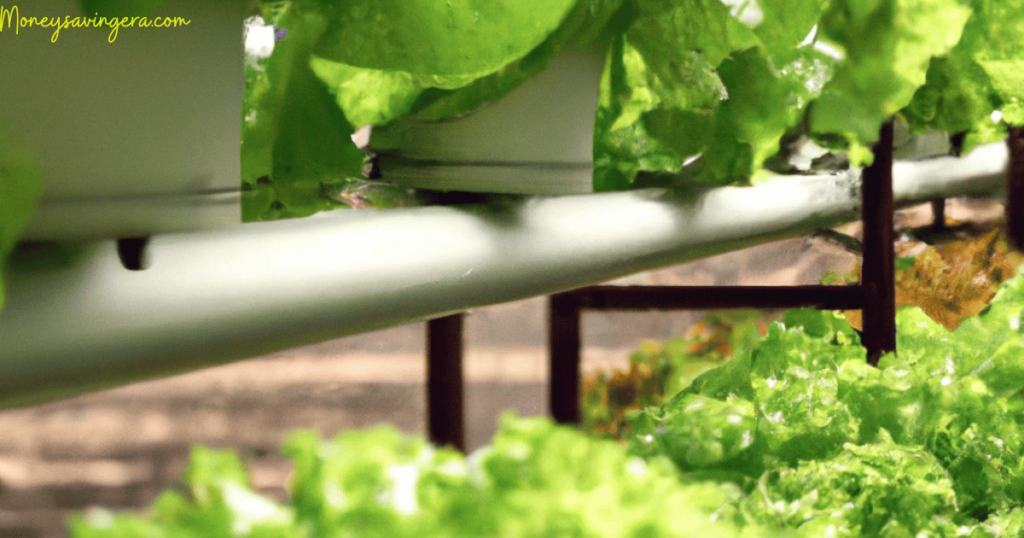
Another essential aspect of Electro Culture Gardening is the use of electrolytes. These substances, such as potassium or phosphorus, are added to the soil or sprayed onto the plants to further enhance their growth and development. Electrolytes help balance the electrical charges within the plant cells, optimizing their functioning and promoting overall plant health.
The frequency and timing of the electric pulses are crucial factors in Electro Culture Gardening. Different plants may require specific frequencies and durations of electrical stimulation based on their growth stages and individual requirements. Properly timing the electrical pulses can ensure optimal growth and yield.
It is important to note that while Electro Culture Gardening has shown promising results, there are a few common mistakes to avoid. Overexposure to electricity can adversely affect the plants and may cause damage. Using the correct voltage and timing is essential to prevent any harm. Additionally, ignoring the specific needs of different plant species can lead to suboptimal results. Each plant has its requirements; understanding these specifics is vital for successful implementation.
There are a few tips to remember to maximize crop yield using Electro Culture Gardening. Firstly, selecting the right plants for this technique is crucial.
Certain crops may respond better to electrical stimulation than others, so choosing plants suitable for Electro Culture Gardening is important. Secondly, creating an Electro Culture Garden with proper soil preparation and nutrient management will contribute to the technique’s success.
How Does Electro Culture Gardening Work?
Understanding how electro-culture gardening works involves several key steps:
- Applying Electric Pulses: Electro culture gardening uses electric pulses to stimulate plant growth. These pulses are applied to the soil or plants using specialized equipment.
- Using Electrolytes: Electrolytes, such as minerals or salts, are often added to the soil or plant solutions to enhance conductivity and improve the effectiveness of the electric pulses.
- Exploring Frequency and Timing: The frequency and timing of the electric pulses are crucial factors in electro culture gardening. Different plants may require specific pulse frequencies and timing for optimal results.
By following these steps, electro culture gardening can significantly impact plant growth and crop yield.
The concept of electro culture gardening has been around for centuries, with early civilizations experimenting with the effects of electricity on plant growth. However, it was not until the 20th century that more formalized research and techniques were developed.
In the 1930s, Russian engineer and scientist Viktor Schauberger pioneered using electric pulses in agriculture. His research focused on harnessing water’s natural energy and using electric pulses to improve plant health and yield. Schauberger’s work laid the foundation for modern electro culture gardening practices.
Since then, studies and experiments have explored the benefits of electro culture gardening. Researchers have found that electric pulses stimulate root development, increase nutrient absorption, and enhance plant growth. This has led to the widespread adoption of electro culture gardening in various agricultural settings.
Today, electro culture gardening continues to evolve as new technologies and innovations are developed. It offers a promising approach to sustainable and efficient agriculture, providing farmers with a tool to boost crop yield and optimize plant health.
Benefits of Electro Culture Gardening
Looking to boost your crop yield and cultivate thriving plants? Look no further than electro culture gardening. In this section, we will uncover the incredible benefits of this innovative gardening technique.
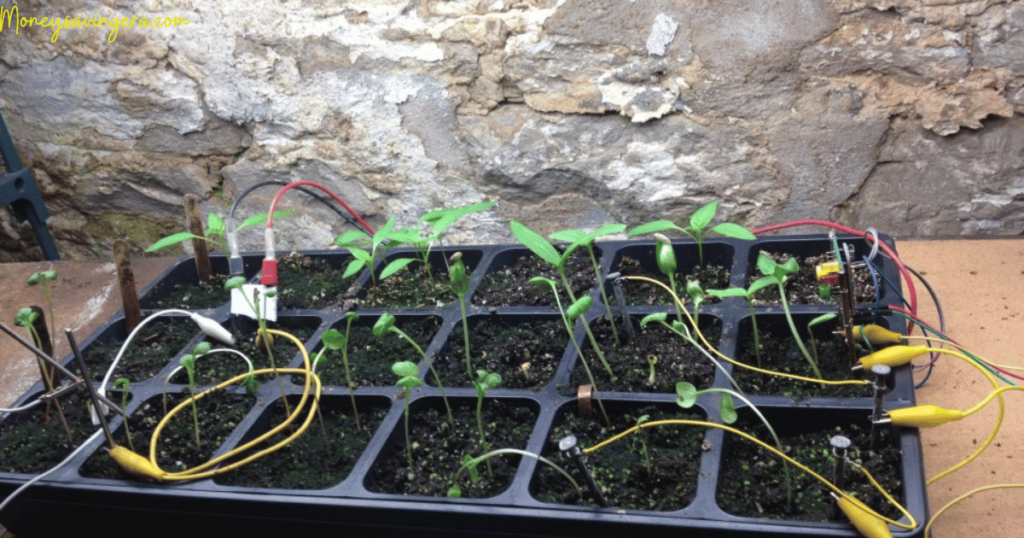
Discover how electro culture gardening can increase crop yield, enhance plant growth, and improve nutrient absorption. Get ready to witness the power of electricity in transforming your garden into a flourishing oasis.
Increased Crop Yield
The following table provides information about the factors that contribute to increased crop yield in electro culture gardening:
| Factors | Description |
|---|---|
| Optimized Nutrient Absorption | Electro culture gardening optimizes water management in plants. The electric pulses applied to the roots help regulate the opening and closing of stomata, the tiny pores on the leaves. This reduces water loss through transpiration and improved water uptake, ensuring that plants receive adequate moisture for growth and development. |
| Enhanced Photosynthesis | Through the use of electrolytes, electro culture gardening facilitates photosynthesis in plants. Electrolytes act as catalysts, boosting the plant’s ability to convert sunlight into energy. This increased energy production results in better plant growth and higher crop yield. |
| Improved Water Management | Electro culture gardening optimizes water management in plants. The electric pulses applied to the roots help regulate the opening and closing of stomata, the tiny pores on the leaves. This leads to reduced water loss through transpiration and improved water uptake, ensuring that plants receive adequate moisture for growth and development. |
| Stress Reduction | Electric pulses in electro culture gardening help reduce stress in plants. By stimulating the production of hormones and enzymes, plants become more resilient to environmental challenges such as drought, heat, and disease. This stress reduction enhances overall plant health and ultimately increases crop yield. |
| Enhanced Soil Fertility | Electro culture gardening promotes the activation of beneficial microorganisms present in the soil. Electric pulses activate these microorganisms, enhancing their efficiency in breaking down organic matter and releasing essential nutrients for plant uptake. This improves soil fertility, leading to increased crop yield. |
By considering these factors, practitioners of electro culture gardening can maximize their crop yield and enjoy the benefits of this innovative technique. Incorporating electro culture techniques and ensuring proper implementation will result in healthier, more productive plants and a higher harvest.
Enhanced Plant Growth
In the realm of electro culture gardening, the use of electro techniques can greatly enhance plant growth. Here are some important factors to consider:
- Stimulation of cellular activity: Electro culture techniques, such as applying electric pulses, can stimulate cellular activity in plants, enhancing plant growth and development. These pulses activate the plant’s metabolism and promote increased nutrient uptake.
- Increase in chlorophyll production: Electro culture gardening has been found to boost chlorophyll production in plants. Chlorophyll is essential for photosynthesis, the process by which plants convert sunlight into energy. Plants can photosynthesize more efficiently with increased chlorophyll production, enhancing plant growth.
- Enhanced nutrient absorption: Using electrolytes in electro culture gardening can enhance the absorption of nutrients by plants. Electrolytes act as conductors, facilitating the movement of ions across plant cell membranes. This improves nutrient uptake, leading to stronger and healthier plants and enhanced plant growth.
- Strengthened root development: Electro culture techniques promote plant root growth and development. Electric pulses stimulate root cell elongation, allowing for greater nutrient and water absorption. Strong and extensive root systems enhance plant growth and overall health.
- Accelerated plant maturation: Electro culture techniques can expedite the maturation process of plants. Gardeners can control the plant’s growth rate by manipulating the frequency and timing of electric pulses. This can be beneficial for optimizing crop yield, achieving desired harvest dates, and enhancing plant growth.
- Resistance to environmental stressors: Enhanced plant growth from electro culture techniques also boosts the plant’s ability to withstand environmental stressors. More robust plants are better equipped to tolerate adverse conditions such as drought, temperature fluctuations, and pest attacks, enhancing plant growth.
Improved Nutrient Absorption
Improved Nutrient Absorption is a crucial aspect of Electro Culture Gardening that can significantly enhance plant growth and crop yield.
By employing specific techniques and implementing appropriate measures, gardeners can optimize nutrient absorption in their plants, leading to better overall health and productivity. Below are some key factors to consider when aiming for improved nutrient absorption in electro culture gardening:
1. Balanced Soil Conditions: Ensuring proper soil pH and nutrient levels is essential for optimal nutrient absorption. The pH level should be within the ideal range for the cultivated plants. Maintaining adequate nutrients, such as nitrogen, phosphorus, and potassium, is crucial for robust nutrient uptake.
2. Organic Matter Incorporation: Adding organic matter, such as compost or well-rotted manure, helps improve soil structure and fertility. It enriches the soil with essential nutrients and facilitates nutrient absorption by enhancing microbial activity. Strong microbial activity assists in breaking down organic matter into forms that plant roots can easily absorb.
3. Microbial Inoculants: Introducing beneficial microbes like mycorrhizal fungi can greatly improve nutrient absorption. These symbiotic organisms form a mutually beneficial relationship with plant roots, extending their reach and enhancing nutrient uptake, particularly phosphorus and other trace elements.
4. Adequate Irrigation: Properly hydrating plants is essential for nutrient absorption. Consistent and adequate watering maintains ideal soil moisture levels, ensuring that nutrients are readily available for uptake by the plants’ root systems.
5. Organic Fertilizers: Using organic fertilizers instead of synthetic ones can enhance nutrient absorption. Organic fertilizers release nutrients slowly, providing a sustained supply that plants can efficiently utilize. They also contribute to the overall soil health and promote the growth of beneficial soil microorganisms.
6. Proper Timing and Application of Nutrients: Timing is crucial when applying fertilizers or nutrients. It is essential to provide nutrients at the right growth stages of the plants. This ensures that the plants can effectively absorb and utilize the nutrients for optimum growth and development.
7. Crop Rotation: Implementing a crop rotation strategy helps prevent nutrient depletion in the soil. Different plants have varying nutrient requirements, and rotation can help avoid excessive nutrient extraction from the soil, improving overall nutrient absorption efficiency.
8. Monitoring and Adjusting: Regular monitoring of soil nutrient levels, plant health, and growth allows gardeners to identify any nutrient deficiencies or imbalances. Adjustments can then be made through targeted fertilization or soil amendments to optimize nutrient absorption.
By considering these factors and implementing appropriate measures, electro culture gardeners can significantly enhance plant nutrient absorption.
This optimization ultimately leads to healthier and more productive gardens, with increased crop yield and improved overall plant growth.
Getting Started with Electro Culture Gardening
Start your journey into Electro Culture Gardening with this comprehensive guide. We’ll dive into two key aspects:
Choosing the Right Plants and Creating an Electro Culture Garden.
Discover the secrets to increasing crop yield, backed by expert research and practical tips. Get ready to unleash the power of electro culture and take your gardening to new heights!
Choosing the Right Plants
When practicing electro culture gardening, it is crucial to choose the right plants. The success of your garden and the benefits you will obtain from it depend on the type of plant you select. Here are some factors to consider when making your choice:
- Growth Rate: Opt for plants with moderate to fast growth rates. These plants are highly responsive to electro culture techniques and will demonstrate significant improvements in yield and growth.
- Fruit and Vegetable Plants: Focus on cultivating fruits and vegetables as they respond exceptionally well to electro culture techniques. Tomatoes, peppers, cucumbers, and strawberries are excellent options for electro culture gardening.
- Hardiness: Select plants that are resilient and can withstand the effects of electro culture techniques. Choose plants that are known to thrive in your specific climate and environmental conditions.
- Nutrient Requirements: Take into account the nutrient requirements of the plants. Some plants have specific nutrient needs for optimal growth and yield. Choose plants that can easily absorb and utilize the nutrients provided through electro culture techniques.
- Compatibility: Consider the compatibility of different plants when planning your garden. Some plants thrive together and support each other’s growth, while others may compete for resources. Research companion planting to maximize the benefits of your electro culture garden.
- Personal Preference: Consider your preferences and the plants you enjoy growing and consuming. Gardening should be a pleasurable experience, so choose plants you love and feel excited to nurture and harvest.
Ready to supercharge your crop yield? In this section, we’ll dive into the practical aspect of implementing electro culture techniques to take your gardening to the next level.
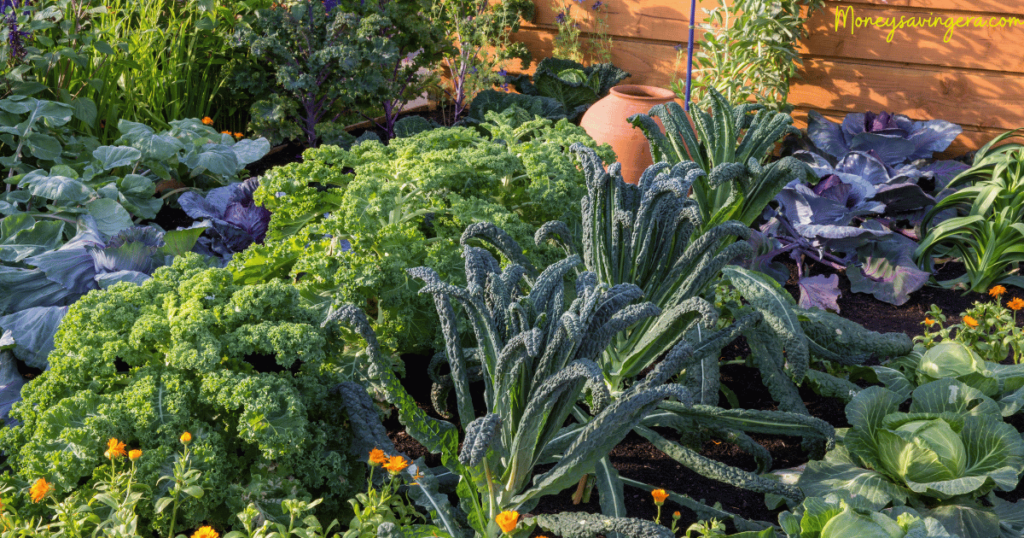
We’ll explore exciting methods like applying electric pulses, utilizing electrolytes, and uncovering the perfect frequency and timing. Get ready to unleash the power of electro culture and witness the incredible results in your bountiful garden. No green thumb required, just a touch of electricity!
Applying Electric Pulses
When it comes to applying electric pulses in electro culture gardening, there are several steps to follow for optimal results:
- Choose the right equipment: To apply electric pulses, you will need a device capable of generating the desired electrical current. Look for a pulse generator or an electro culture kit that suits your gardening needs.
- Prepare the plants: Before applying electric pulses, ensure your plants are healthy and well-watered. Make sure they are properly positioned in the garden or pots.
- Select the appropriate pulse frequency: Plant species respond differently to electric pulses. Consider the specific requirements of your plants and adjust the frequency accordingly. Start with a low frequency and gradually increase it to find the best setting.
- Apply the electric pulses: Connect the pulse generator to the plants using electrodes or conductive materials. Carefully follow the manufacturer’s instructions to ensure safe and effective application.
- Monitor the plants: Regularly check the plants for any signs of stress or damage. Adjust the pulse intensity or frequency if necessary to avoid overexposure and ensure the well-being of the plants.
- Observe plant growth: Over time, monitor the growth and development of the plants. Note any changes in growth rate, nutrient uptake, or overall health. The electric pulses should enhance plant growth and improve crop yield.
- Maintain a consistent pulse schedule: For best results, maintain a consistent schedule for applying electric pulses. This helps plants develop a routine and respond more effectively to electrical stimulation.
- Adjust as needed: As you gain experience with electro culture gardening, you may discover specific needs for certain plants or variations in pulse application. Be open to experimenting and refining your techniques to optimize results.
Following these steps, you can effectively apply electric pulses in your electro culture gardening practice. Remember to prioritize the well-being and growth of the plants and make adjustments as needed to enhance their overall performance.
Remember that electro culture gardening is a dynamic and evolving technique, so continue learning and experimenting to improve your results.
Using Electrolytes
When practicing electro culture gardening, using electrolytes can enhance plant growth and optimize crop yield. Here are some ways to effectively use electrolytes in your electro culture garden:
- Choose the right electrolyte solution: Select an electrolyte solution specifically formulated for plant use. Look for one that contains essential nutrients like potassium, calcium, and magnesium.
- Apply the solution correctly: Timing is crucial when using electrolytes. Apply the solution during the early stages of plant growth or when plants are experiencing nutrient deficiencies.
- Dilute the solution properly: Follow the instructions provided with the electrolyte solution to ensure proper dilution when using electrolytes. Adding too much can negatively affect the plants, while adding too little may not provide the desired benefits.
- Use the appropriate amount: The amount of electrolyte solution needed may vary depending on the size of your garden and the specific plants you are growing. Always refer to the recommended dosage guidelines the manufacturer provides when using electrolytes.
- Apply the solution evenly: Ensure that the electrolyte solution is distributed evenly across your garden to provide consistent benefits to all plants when using electrolytes. Use a watering can or a sprayer to achieve even application.
- Monitor and adjust: Regularly monitor the condition of your plants and observe their response to the electrolyte solution when using electrolytes. Adjust the application accordingly if you notice any signs of over-fertilization or nutrient imbalances.
- Complement with other electro culture techniques: Using electrolytes is just one aspect of electro culture gardening. Combine it with other techniques, such as applying electric pulses and exploring frequency and timing to maximize the benefits when using electrolytes.
By effectively using electrolytes in your electro culture garden, you can provide essential nutrients to your plants, promote healthy growth, and increase crop yield.
Exploring Frequency and Timing
In Electro Culture Gardening, the exploration of frequency and timing of electrical pulses plays a crucial role in achieving optimal results and enhancing plant growth. By comprehending the significance of frequency and timing, gardeners can effectively utilize this technique to boost their crop yield.
When it comes to exploring frequency and timing in Electro Culture Gardening, there are some important considerations to keep in mind:
1. Frequency of electrical pulses: The frequency, or rate, at which electrical pulses are applied directly impacts plant growth. Research suggests that specific frequencies can stimulate various physiological processes in plants, such as nutrient absorption and root development. It is recommended to start with lower frequencies and gradually adjust them based on the response of the plants and desired outcomes.
2. Timing of electrical pulses: The timing of electrical pulses is equally significant in Electro Culture Gardening. Different plants have different growth patterns and stages, and applying electrical pulses at the appropriate time can significantly enhance their growth. For instance, applying pulses during the vegetative stage can promote leaf development, while pulses during the flowering stage can boost flower production.
3. Plant-specific considerations: Each plant species may respond differently to electrical pulses and have unique timing requirements. Researching and understanding the specific needs of the plants you are growing is essential. Factors such as the plant’s growth cycle, optimal conditions, and any known preferences for electrical stimulation should be considered.
By thoroughly exploring the frequency and timing of electrical pulses in Electro Culture Gardening, you can cultivate stronger, healthier plants and maximize crop yield.
Pro-tip: Record the frequencies and timing you apply to each plant species. This will help you track the effectiveness of different approaches and refine your Electro Culture Gardening techniques over time. Remember to closely monitor the plants and make adjustments to ensure optimal growth and results.
Electro Culture Gardening is a scientific practice, and experimentation is key. The more you explore and fine-tune the frequency and timing of electrical pulses, the better you will understand how to harness this technique for maximum crop yield.
Common Mistakes to Avoid
Boost your crop yield with electro culture gardening by avoiding common mistakes that could hinder your progress.
From overexposure to electricity to using incorrect voltage and ignoring plant specifics, this section uncovers the pitfalls to avoid.
So, let’s dive in, side-step the mishaps, and ensure your electro culture gardening journey is successful.
Overexposure to Electricity
Overexposure to electricity is a significant concern when practicing electro culture gardening. It is important to be aware of the risks and take necessary precautions to ensure the safety of your plants and yourself.
- Check voltage levels: It is crucial to use the correct voltage for your electro culture garden. Excessive voltage can lead to overexposure and potentially harm your plants. Always follow the manufacturer’s guidelines and use the recommended voltage to avoid any risks.
- Limit exposure time: Exposing plants to electricity for extended periods can have adverse effects. It is important to carefully monitor the duration of exposure and avoid prolonged periods of electric pulses. This will prevent plants from being overwhelmed and mitigate the risk of overexposure.
- Observe plant response: Pay close attention to your plants’ reactions to the electrical pulses. If you notice any signs of stress or damage, such as wilting, discoloration, or stunted growth, it may indicate overexposure to electricity. Adjust the frequency, duration, or intensity of the electric pulses accordingly to ensure the well-being of your plants.
- Protective measures: Implement necessary protective measures to minimize the risk of overexposure. Use insulating materials and ensure proper grounding to prevent electrical accidents. Consider using surge protectors and circuit breakers to safeguard against power surges.
- Seek professional guidance: If you are new to electro culture gardening or unsure about the appropriate electricity usage, it is advisable to seek guidance from experts or experienced gardeners. They can provide valuable insights, tips, and techniques to mitigate the risk of overexposure.
By being cautious and taking necessary precautions, you can prevent overexposure to electricity and ensure the success and health of your electro culture garden.
Safety should always be a top priority when practicing electro culture gardening. Stay informed, follow guidelines, and take the necessary steps to protect your plants and yourself from overexposure to electricity.
Using Incorrect Voltage
When implementing Electro Culture Gardening techniques, avoiding incorrect voltage is crucial as it can harm your plants and potentially damage your gardening setup. Here are some steps to follow to ensure you are using the correct voltage:
1. Research and educate yourself on the specific voltage requirements for Electro Culture Gardening. Different plants may have different voltage needs, so it is essential to understand the specific requirements of the plants you are cultivating.
2. Consult with experts or experienced gardeners who have successfully practiced Electro Culture Gardening. They can provide valuable insights and guidance on voltage settings based on their practical experience.
3. Use a reliable and accurate voltage meter or multimeter to measure the voltage accurately. This will help you apply the correct voltage amount to your plants.
4. Start with a lower voltage setting and gradually increase it if necessary. This approach allows you to monitor the plant’s response and adjust accordingly.
5. Regularly check the voltage levels to ensure they remain consistent throughout the gardening process. Fluctuating or incorrect voltage can lead to inconsistent results and potential harm to your plants.
6. If you notice any signs of stress or damage in your plants, such as wilting, discoloration, or stunted growth, immediately check the voltage levels and make any necessary adjustments.
7. Record the voltage settings and their effects on your plants. This documentation can help you identify patterns and make informed decisions in the future.
Using incorrect voltage in Electro Culture Gardening can hinder the growth and development of your plants. It is essential to take the time and effort to understand the specific voltage requirements for each plant and maintain consistency and accuracy in voltage application.
The concept of Electro Culture Gardening dates back to the early 20th century when scientists began experimenting with the effects of electricity on plant growth. Since then, extensive research and advancements have been made in understanding the relationship between electricity and plant physiology.
Electro Culture Gardening is gaining popularity as a sustainable and efficient method for enhancing crop yield and plant health. By harnessing the power of electricity, gardeners can create an optimal growing environment for their plants and maximize the potential of their crops.
However, it is crucial to use the correct voltage to avoid any adverse effects and ensure the success of your Electro Culture Garden.
Ignoring Plant Specifics
When engaging in electro culture gardening, it is crucial not to overlook the specifics of each plant. Neglecting these details can harm your plants’ overall health and success.
Failing to consider each plant’s unique needs and characteristics may unintentionally impede their growth and yield.
| Specifics | The Consequences of Ignoring Plant Specifics |
| Stunted Growth | Different plants have varying growth rates and requirements. Disregarding these specifics can result in stunted growth, leading to smaller plants that fail to reach their full potential. |
| Nutritional Deficiencies | Each plant requires specific nutrients to thrive. Overlooking these specifics can cause imbalances or deficiencies in essential minerals, leading to poor health and weakened immune systems. |
| Disease Susceptibility | Neglecting plant specifics can make them more susceptible to diseases and pests. Different plants have different levels of resistance to various pathogens, and failing to consider this can leave them vulnerable and prone to infections. |
| Inefficient Watering | Every plant has different water requirements; disregarding these can result in over or under-watering. This can stress the plants and hurt their growth and overall health. |
| Improper Lighting | Various plants have varying light requirements. Not providing adequate or suitable lighting can lead to weak, leggy plants with poor foliage development. |
Extensive research on the specific plants you are cultivating is essential to avoid the consequences of ignoring plant specifics.
Consider their preferred soil type, optimal temperature range, light requirements, and nutrient needs. By understanding each plant’s unique characteristics, you can create the ideal environment for their growth.
Moreover, regularly monitoring and assessing your plants’ health and adjusting accordingly is important. Pay attention to signs of nutrient deficiencies, pest infestations, or over/under watering, and take appropriate measures to address these issues promptly.
Remember, successful electro culture gardening encompasses a holistic approach considering each plant’s needs. You can cultivate a thriving and abundant garden by acknowledging and respecting these plant specifics.
Tips for Maximizing Crop Yield
When it comes to maximizing crop yield, there are several key tips for maximizing crop yield that can help farmers achieve the best results. Farmers can enhance their productivity and cultivate thriving crops by following these tips for maximizing crop yield.
- Soil Management: Start by ensuring the soil is properly prepared for planting. Conduct soil tests to determine its nutrient composition and pH levels. Based on the results, add the necessary amendments to optimize soil health.
- Crop Rotation: Implement a crop rotation plan to minimize the risk of diseases, pests, and nutrient depletion. Rotate crops with different nutrient requirements to maintain soil fertility and prevent the buildup of pests or diseases.
- Healthy Seed Selection: Choose high-quality seeds resistant to pests, diseases, and environmental conditions common to your area. This will establish a strong foundation for healthy plant growth.
- Irrigation Management: Implement an efficient irrigation system tailored to the specific water needs of each crop. Avoid under or over-watering, as both can negatively impact crop yield.
- Proper Fertilization: Apply fertilizers in the right amounts and at the appropriate times during the crop’s growth stages. This will ensure that plants receive the necessary nutrients for optimal development.
- Weed Control: Implement effective weed management strategies to prevent weeds from competing with crops for nutrients, water, and sunlight. This can be achieved through mechanical cultivation, mulching, or the use of herbicides.
- Pest and Disease Management: Regularly monitor crops for pest and disease infestation signs. Implement integrated pest management techniques that emphasize biological control methods and minimize the use of chemical pesticides.
- Optimal Harvesting: Harvest crops at the right stage of maturity to maximize yield and quality. Be mindful of timing and proper handling techniques to minimize post-harvest losses.
In a small farming community, a farmer implemented these tips for maximizing crop yield to maximize his crop yield. By focusing on soil management and crop rotation, he improved the health of his soil and reduced disease incidence.
Alongside proper irrigation and fertilization practices, he increased the overall productivity of his farm. Through strategic weed and pest control measures, he minimized yield loss and improved the quality of his crops.
Combined with optimal harvesting techniques, these practices resulted in higher market prices for his produce and ultimately boosted his income. By following these tips for maximizing crop yield, any farmer can experience similar success and achieve a thriving agricultural operation.
Some Important Facts
- ✅ Electro-culture gardening is an organic gardening method that uses electromagnetic frequencies to stimulate plant growth. (Source: Homes and Gardens)
- ✅ Copper wire is a common material used in electro-culture gardening, and it can be used in various ways, such as wrapping it around dowels or creating antenna structures. (Source: Homes and Gardens)
- ✅ Proponents of electro-culture gardening claim that it can enhance nutrient uptake, strengthen plants’ immune systems, and improve their ability to withstand environmental stressors. (Source: Homes and Gardens)
- ✅ The effectiveness of electro-culture gardening is primarily based on anecdotal evidence and personal experiences, as scientific research on this method is limited. (Source: Homes and Gardens)
- ✅ While electro-culture gardening has potential benefits, it remains a niche approach within the broader gardening community due to the complexity and variability of electromagnetic fields. (Source: Homes and Gardens)


